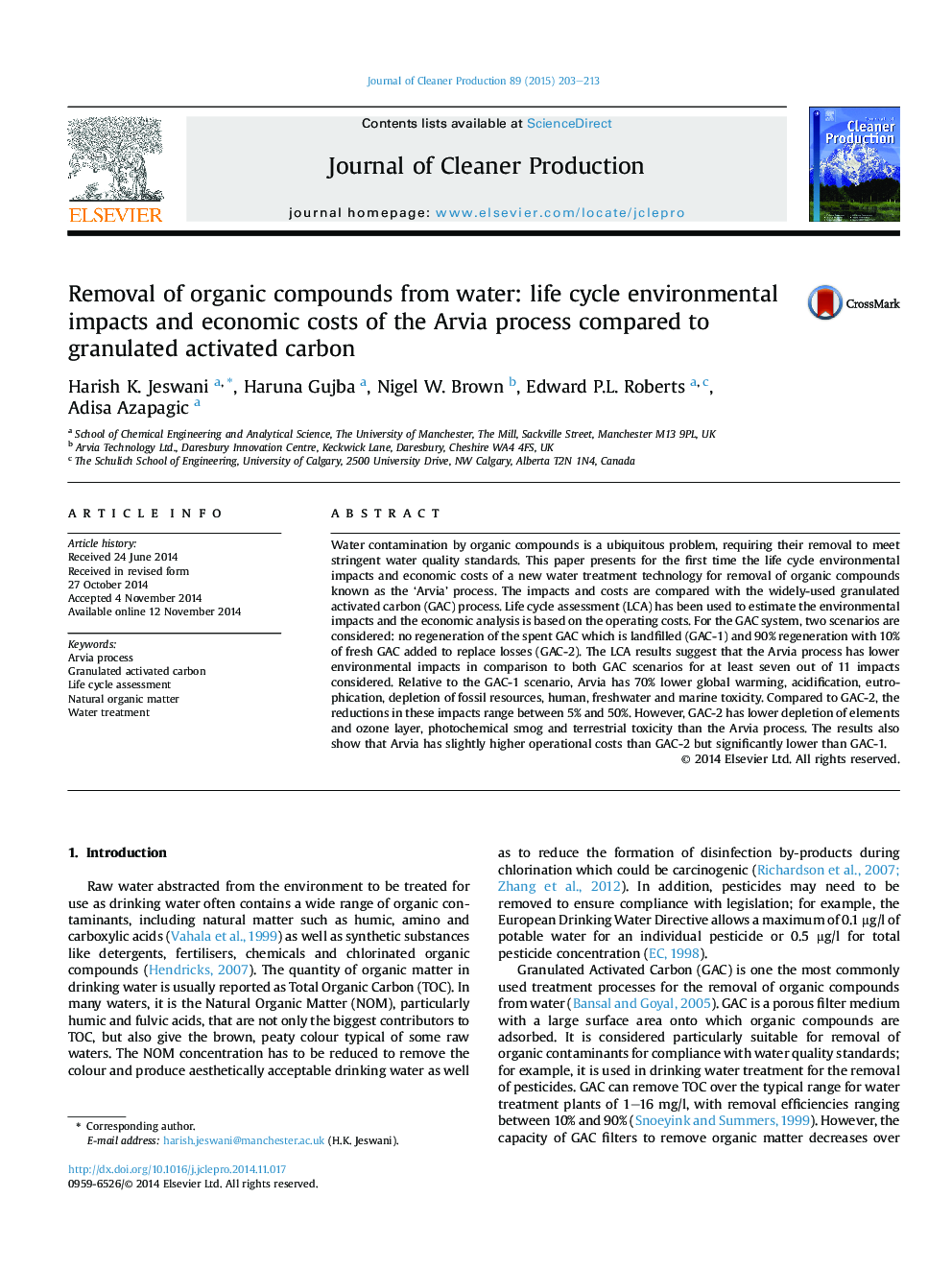| Article ID | Journal | Published Year | Pages | File Type |
|---|---|---|---|---|
| 8105063 | Journal of Cleaner Production | 2015 | 11 Pages |
Abstract
Water contamination by organic compounds is a ubiquitous problem, requiring their removal to meet stringent water quality standards. This paper presents for the first time the life cycle environmental impacts and economic costs of a new water treatment technology for removal of organic compounds known as the 'Arvia' process. The impacts and costs are compared with the widely-used granulated activated carbon (GAC) process. Life cycle assessment (LCA) has been used to estimate the environmental impacts and the economic analysis is based on the operating costs. For the GAC system, two scenarios are considered: no regeneration of the spent GAC which is landfilled (GAC-1) and 90% regeneration with 10% of fresh GAC added to replace losses (GAC-2). The LCA results suggest that the Arvia process has lower environmental impacts in comparison to both GAC scenarios for at least seven out of 11 impacts considered. Relative to the GAC-1 scenario, Arvia has 70% lower global warming, acidification, eutrophication, depletion of fossil resources, human, freshwater and marine toxicity. Compared to GAC-2, the reductions in these impacts range between 5% and 50%. However, GAC-2 has lower depletion of elements and ozone layer, photochemical smog and terrestrial toxicity than the Arvia process. The results also show that Arvia has slightly higher operational costs than GAC-2 but significantly lower than GAC-1.
Related Topics
Physical Sciences and Engineering
Energy
Renewable Energy, Sustainability and the Environment
Authors
Harish K. Jeswani, Haruna Gujba, Nigel W. Brown, Edward P.L. Roberts, Adisa Azapagic,
